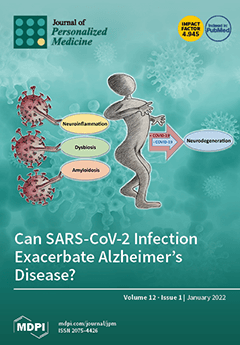This nationwide, population-based, retrospective, matched case–control study included 111,960 newly diagnosed patients with scleritis who were identified by the International Classification of Diseases, Ninth Revision, Clinical Modification code 379.0, selected from the Taiwan National Health Insurance Research Database. Demographic characteristics, Sjögren syndrome, and
[...] Read more.
This nationwide, population-based, retrospective, matched case–control study included 111,960 newly diagnosed patients with scleritis who were identified by the International Classification of Diseases, Ninth Revision, Clinical Modification code 379.0, selected from the Taiwan National Health Insurance Research Database. Demographic characteristics, Sjögren syndrome, and comorbid conditions within 1 year before the scleritis diagnosis were examined using univariate logistic regression analyses, and a paired
t-test was used for continuous variables. Adjusted logistic regression was used to compare the prognosis odds ratio (OR) of the patients with scleritis with the controls. After adjustment for confounders, patients with Sjögren syndrome were remarkably more likely to have scleritis than the controls (OR = 33.53, 95% confidence interval (CI) = 27.43–40.97,
p < 0.001). Other conditions found to have increased odds of scleritis included post ocular pterygium, glaucoma, and scleral surgery (OR = 4.01, 95% CI = 3.64–4.43; OR = 3.16, 95% CI = 2.24–4.47; OR = 6.83, 95% CI = 5.34–8.74, respectively); systemic infections, such as syphilis, tuberculosis, and a human herpes viral infection (OR = 4.01, 95% CI = 2.93–5.50; OR = 2.24, 95% CI = 1.94–2.58; OR = 8.54, 95% CI = 8.07–9.03, respectively); and systemic diseases, such as rheumatoid arthritis, granulomatous vasculitis, systemic lupus erythematosus, ankylosing spondylitis, and gout (OR = 2.93, 95% CI = 2.66–3.23; OR = 7.37, 95% CI = 3.91–13.88; OR = 3.18, 95% CI = 2.63–3.85; OR = 5.57, 95% CI = 4.99–6.22; OR = 2.84, 95% CI = 2.72–2.96, respectively). The results strongly support an association between Sjögren syndrome, post ocular surgery, systemic infection disease, systemic autoimmune disease, and scleritis.
Full article






